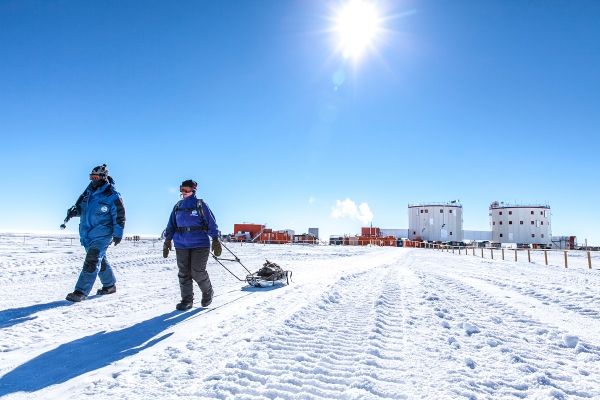Even in earlier warm periods there were pulse-like releases of CO₂ to the atmosphere. Today's anthropogenic CO₂ rise, however, is more than six times larger and almost ten times faster than previous jumps in the CO₂ concentration. This is the conclusion reached by a European research team led by the University of Bern.
A new measurement technology developed at the University of Bern provides unique insights into the climate of the past. Previous CO₂ concentrations in the atmosphere could be reconstructed more accurately than ever before, thanks to high-resolution measurements made on an Antarctic ice core. The study, which analyzed the Earth’s atmospheric composition between 330,000 and 450,000 years ago, was made possible by the commitment of experts, and their decades of experience, at the University of Bern. The results of the study have been published in Science.
Melting ice masses disturbed the ocean circulation
In 2008, the Bern ice core specialists were able to show that the CO₂ concentration in the atmosphere during the last 800,000 years was consistently much lower than today. Since then, the ice core experts have built upon those findings enabling a much more detailed reconstruction of the 330,000 to 450,000 year time window. Until now, the maximum speed and frequency of naturally occurring centennial scale jumps in the CO₂ concentration remained unknown. This study shows that abrupt CO₂ rises are a pervasive feature of our climate system and that they can even occur during interglacial periods. "Until now, it had been assumed that the climate was very stable during previous interglacial periods and that there were no abrupt changes in the atmospheric CO₂ concentration," explains Christoph Nehrbass-Ahles, lead author of the study, who earned a doctorate from the University of Bern and is now based at the University of Cambridge. According to Nehrbass-Ahles, the abrupt rises were always evident when melting ice masses in Greenland or Antarctica considerably disturbed the ocean circulation. If the CO₂ in the atmosphere rose quickly, simultaneous changes in the Atlantic Ocean's circulation could also be detected.
Read more at University Of Bern
Image: Concordia research station in Antarctica at 3233 m ASL. CREDIT: Thibaut Vergoz, Institut polaire français.


